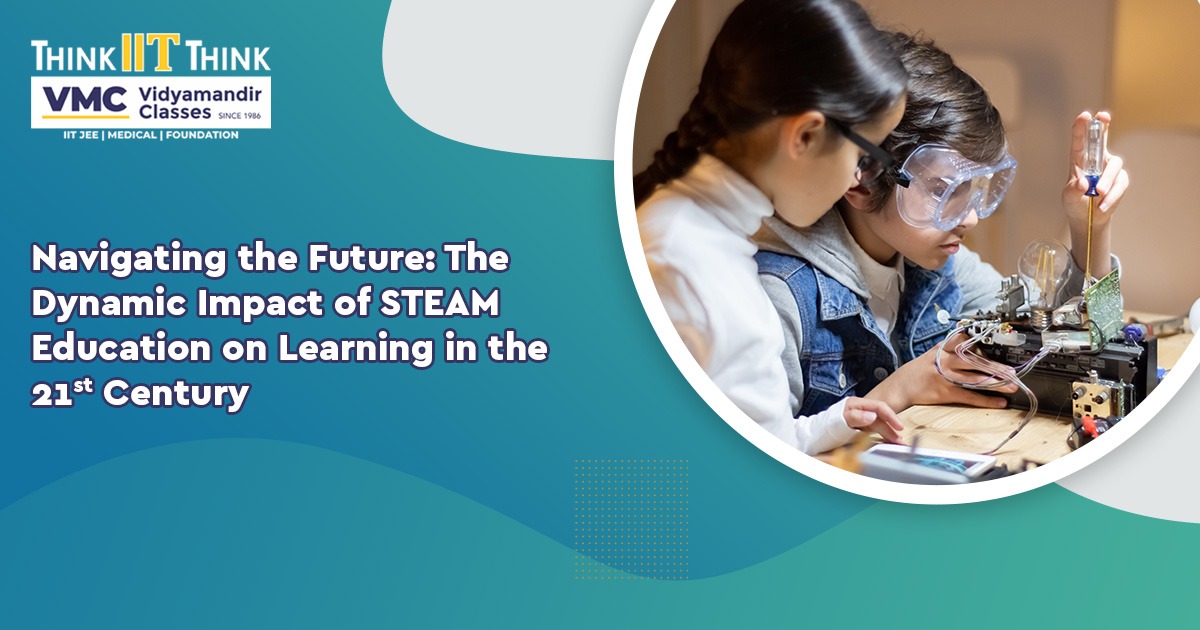Navigating the Future: The Dynamic Impact of STEAM Education on Learning in the 21st Century
 Posted On
Posted On
256 total views, 2 views today
In an era defined by rapid technological advancements and a constantly evolving job landscape, traditional teaching methods struggle to equip students with the skills needed to navigate the challenges of the modern world. Enter the multidisciplinary education revolution, a transformative force reshaping the learning landscape. At the forefront of this revolution is STEAM education, an approach that integrates Science, Technology, Engineering, Arts, and Mathematics, offering a holistic and comprehensive learning experience.

The Essence of STEAM:
More than a mere acronym, STEAM embodies a paradigm shift in education philosophy, acknowledging that real-world problems demand a multidisciplinary perspective. By interweaving diverse subjects, STEAM education mirrors the complexities of the modern world, preparing students to become active creators rather than passive consumers of technology.
Tech-Savvy Necessity:
In a society increasingly driven by technology, being tech-savvy is no longer a choice but a necessity. The STEAM approach ensures that students not only understand technology but actively engage with it. Through coding, robotics, and digital design, students gain the skills essential for unlocking the full potential of technology.
Hands-On Learning:
STEAM education redefines the learning experience by embracing hands-on methodologies. Students delve into practical, real-world experiences that deepen their understanding of subjects. This immersive approach empowers students to actively tackle complex issues, honing their critical thinking and problem-solving skills.
Active Exploration:
In the STEAM environment, students are not passive recipients of knowledge; they become active explorers, directing their educational journeys with curiosity and creativity. This shift from a teacher-centric to a student-centric approach fosters a sense of ownership and self-directed learning.
Collaborative Learning:
Collaboration and teamwork are fundamental to STEAM education. Through group projects, problem-solving challenges, and interdisciplinary activities, students refine their ability to work effectively with others. These collaborative skills are invaluable in a future job market where teamwork is the norm.
Innovation at the Core:
Innovation is the heartbeat of STEAM education. Open-ended projects encourage students to think outside the box, turning them into proactive agents of change. This skill is particularly crucial in a world where automation and artificial intelligence are reshaping industries, creating a demand for individuals with strong collaborative skills across diverse fields.
Meeting Industry Demands:
As automation and artificial intelligence redefine industries, the demand for individuals equipped with strong multidisciplinary skills is skyrocketing. Whether students pursue careers in engineering, healthcare, the arts, or entrepreneurship, a holistic education ensures they are well-prepared to thrive in an ever-evolving job market.
Inclusive Design:
An integral aspect of STEAM education is its intentional design for inclusivity. It is accessible to all students, irrespective of background, gender, or abilities. The commitment to diversity and equal access actively contributes to building a fairer and more inclusive society.
Global Perspective:
Going beyond geographical boundaries, collaborative education encourages students to embrace a global perspective. By addressing global challenges like climate change and healthcare disparities, students become informed and socially responsible global citizens.
Cultivating a Growth Mindset:
STEAM education fosters a growth mindset, where failure is seen not as a roadblock but as a stepping stone to success. Through experimentation and learning from mistakes, students develop crucial qualities for navigating an ever-changing world, including resilience, adaptability, and a willingness to take calculated risks.
Final Thoughts:
The STEAM education revolution signifies a substantial shift in how we prepare students for the future. It provides individuals with the abilities, perspective, and information necessary to succeed in a world where adaptation, creativity, and teamwork are crucial. As we navigate the complex challenges of the 21st century, STEAM education stands as a beacon of hope, preparing the next generation to lead the way. Through its transformative approach, students emerge not just as learners but as architects of their own success in an ever-evolving global landscape.




